Selling online isn’t a one-size-fits-all game, and Shopify and ClickFunnels are great examples as to why. One is built to be your digital storefront powerhouse; the other is like a sales-obsessed closer.
Both are built for selling online, but they have fundamentally different goals. Shopify is built from the ground up as a full-on eCommerce platform. ClickFunnels is about building a focused path that turns a visitor into a buyer, often for a single product or offer.
I’ve been using Shopify on and off for several years now, so I know my way around its dashboards and endless app integrations. ClickFunnels is a little newer for me, but I do have experience with creating funnels and customer journeys, so getting into it wasn’t too hard.
I spent time testing, experimenting, and actually building out pages and funnels to see how each one holds up in the real world. In this breakdown, I’ll share what I found after putting both platforms to the test.
Table of contents:
Shopify vs. ClickFunnels at a glance
|
Shopify |
ClickFunnels |
|
|---|---|---|
|
Ease of use |
⭐⭐⭐⭐⭐ Very intuitive with a clean dashboard and simple navigation; strong community forum for help and advice |
⭐⭐⭐⭐ Slightly steeper navigation curve but excellent step-by-step tutorials and guided setup throughout |
|
Customization |
⭐⭐⭐⭐⭐ Thousands of apps and themes, plus full code access (HTML, CSS, JavaScript, Liquid) for deep customization |
⭐⭐⭐⭐ Good drag-and-drop editor with plenty of section templates; less control over site structure compared to Shopify |
|
Sales and marketing |
⭐⭐⭐⭐ Robust built-in tools for discounts, abandoned cart recovery, gift cards, and email marketing; excels with multi-product stores |
⭐⭐⭐⭐⭐ Designed for conversion-focused funnels with upsells, downsells, order bumps, webinars, and built-in A/B testing |
|
Integrations |
⭐⭐⭐⭐⭐ 8,000+ apps in the Shopify App Store, covering everything from dropshipping to accounting; also integrates with Zapier |
⭐⭐⭐⭐⭐ Smaller app ecosystem but strong native integrations with marketing, scheduling, and CRM tools (Slack, Mailchimp, Calendly, etc.); also integrates with Zapier |
|
Analytics |
⭐⭐⭐⭐⭐ Comprehensive native analytics with over 150 reports, real-time Live View, and custom reporting via ShopifyQL |
⭐⭐⭐⭐ Detailed funnel analytics with metrics for each step (EPC, opt-ins, recurring sales); great for funnels, less depth for store-wide trends |
Shopify lets you get started for a lot cheaper
When it comes to pricing, Shopify and ClickFunnels cater to very different needs. So it’s not as simple as saying one is cheaper than the other.
If you don’t want to get into the weeds, here’s the gist: you can start with Shopify for $5/month, but you’ll need to shell out at least $97/month for ClickFunnels. But you’re getting a lot more for ClickFunnels in the process.
And now, into the weeds.
Shopify’s most barebones option is the Starter plan at $5/month, which lets you sell only through social media, messaging apps, and a very lightweight online store with product pages, a contact page, and checkout. The most basic (and most popular) full-store plan starts at $39/month ($29/month billed annually), making it a good option for store owners who want to build a solid eCommerce foundation.
The mid-tier Grow plan at $105/month ($79/month billed annually) and Advanced plan at $399/month ($299/month billed annually) offer more muscle for scaling, like added staff accounts, advanced reports, and tools to manage inventory across multiple locations. These are great for merchants looking to grow without jumping into enterprise territory. But if you need it, there’s Shopify Plus for very high-volume stores, starting at $2,300/month on a 3-year term.
ClickFunnels, on the other hand, starts at $97/month ($81/month billed annually) for its Launch plan, which includes one workspace, one funnel, and 10,000 contacts. That’s a far cry from Shopify’s $5/month, but it also comes with way more features. That’s generally the case overall: you’ll pay a lot more with ClickFunnels, but you’ll also get a lot more.
From there, pricing quickly runs up on ClickFunnels: the Scale plan at $197/month ($164/month billed annually) includes unlimited funnels and more generous contact and email allowances, while the Optimize plan at $297/month ($248/month billed annually) is built for serious marketers juggling multiple campaigns and collaborators, with 10 workspaces and up to 150,000 contacts. Then, at the top end, the Dominate plan comes in at $5,997/year. But that price tag reflects what it’s optimized for: high-volume sales funnels, lead generation, larger teams, and marketing automation.
ClickFunnels is built for single offers; Shopify is built for multi-product storefronts
ClickFunnels shines when you’re selling a single product or a focused group of offers, guiding customers through a streamlined sales funnel toward a purchase. Its design philosophy is about minimizing distractions so that you bring traffic into a highly-optimized funnel that leads them straight to checkout.
This works especially well for digital products, launches, or high-converting lead generation campaigns.
For example, let’s say you have an eBook to sell. With ClickFunnels’ Product Launch funnel template, you can guide your audience to purchase in just four steps.
-
Start with a simple opt-in page that asks for their name and email.
-
From there, they go to a page with explainer videos or written content to build interest.
-
Next, they hit an order form page where you summarize the offer and collect payment.
-
Finally, they land on a confirmation page that thanks them and encourages a review or future upsell.
The whole journey is tightly focused and optimized to convert, and you can see a map of how this entire funnel will work in the funnel builder (which looks like a typical branch logic map).
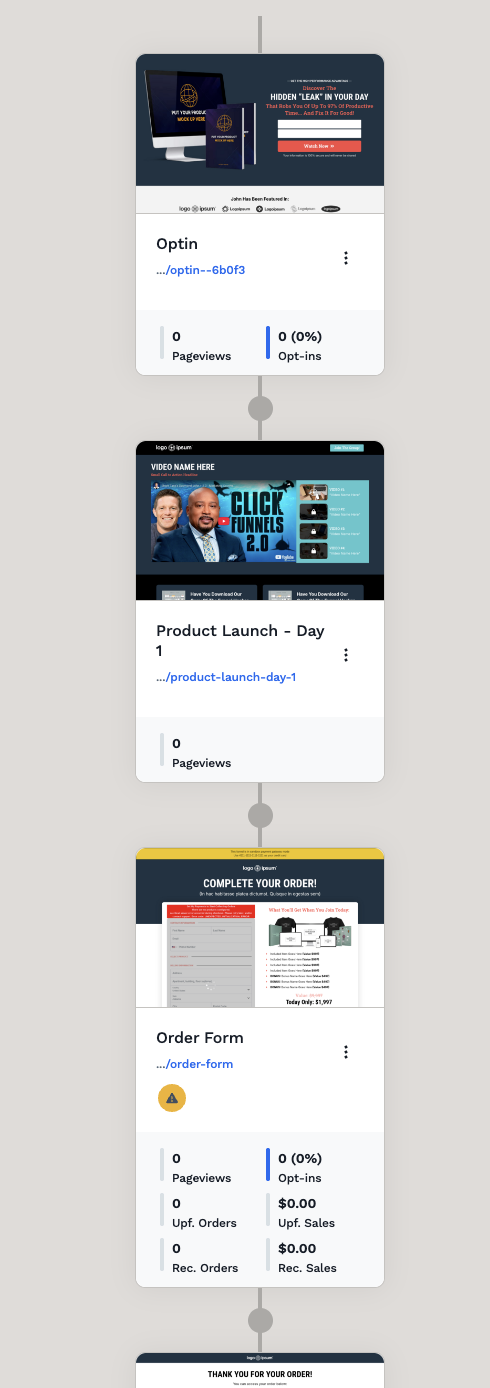
In contrast, Shopify is built for traditional online stores with multiple products. Customers are free to browse your product catalog, compare options, and shop at their own pace. You can still create landing pages and focus your marketing on individual products, but it doesn’t hold your hand as much as ClickFunnels, so you’ll have to do more customizing.
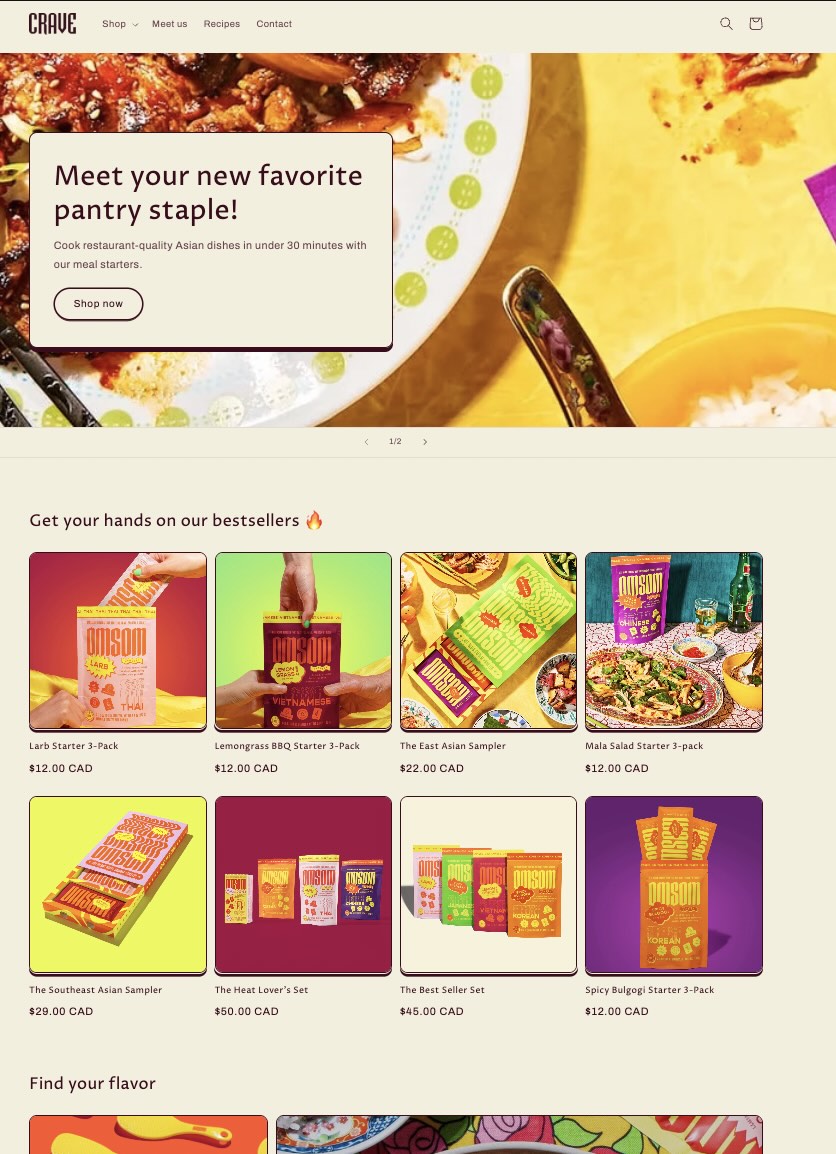
Going back to our eBook example, on Shopify, you’d likely list it as a digital product in your store. Customers would discover it through your home page, a collection, or a featured product section. They’d click into the product page, read a brief description, skim some product images (or maybe a preview of the eBook), and decide whether or not to buy. If it doesn’t resonate right away, they might browse the rest of your catalog, which is a more open-ended, self-directed experience.
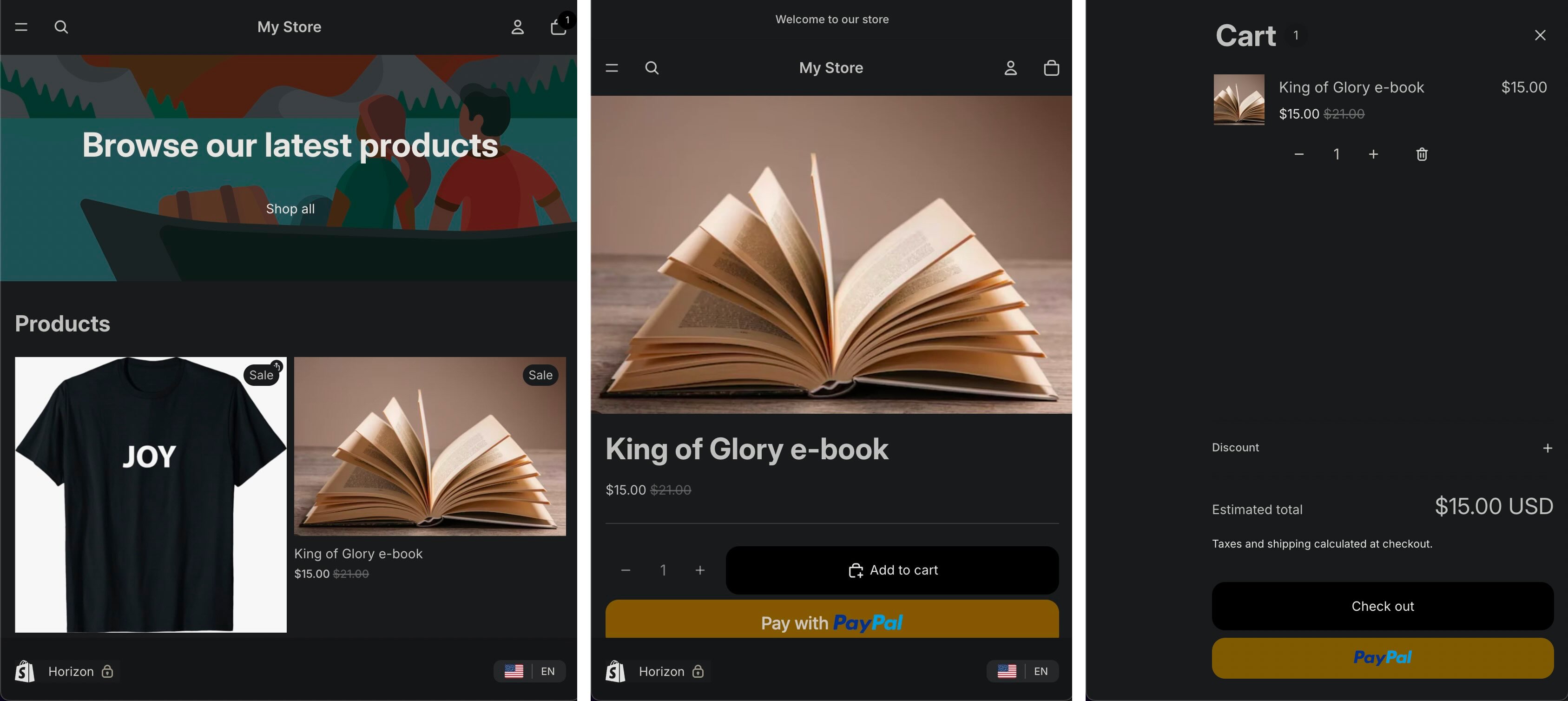
Shopify is better for physical products; ClickFunnels excels with digital
You can sell digital products with Shopify, but Shopify is built for physical products. It has a whole ecosystem for managing physical inventory and fulfilling orders. This includes the native Shopify Shipping app and integrations with major shipping carriers, barcode scanning, calculating shipping costs, low-stock alerts, plus the ability to generate and print shipping labels directly from your dashboard.
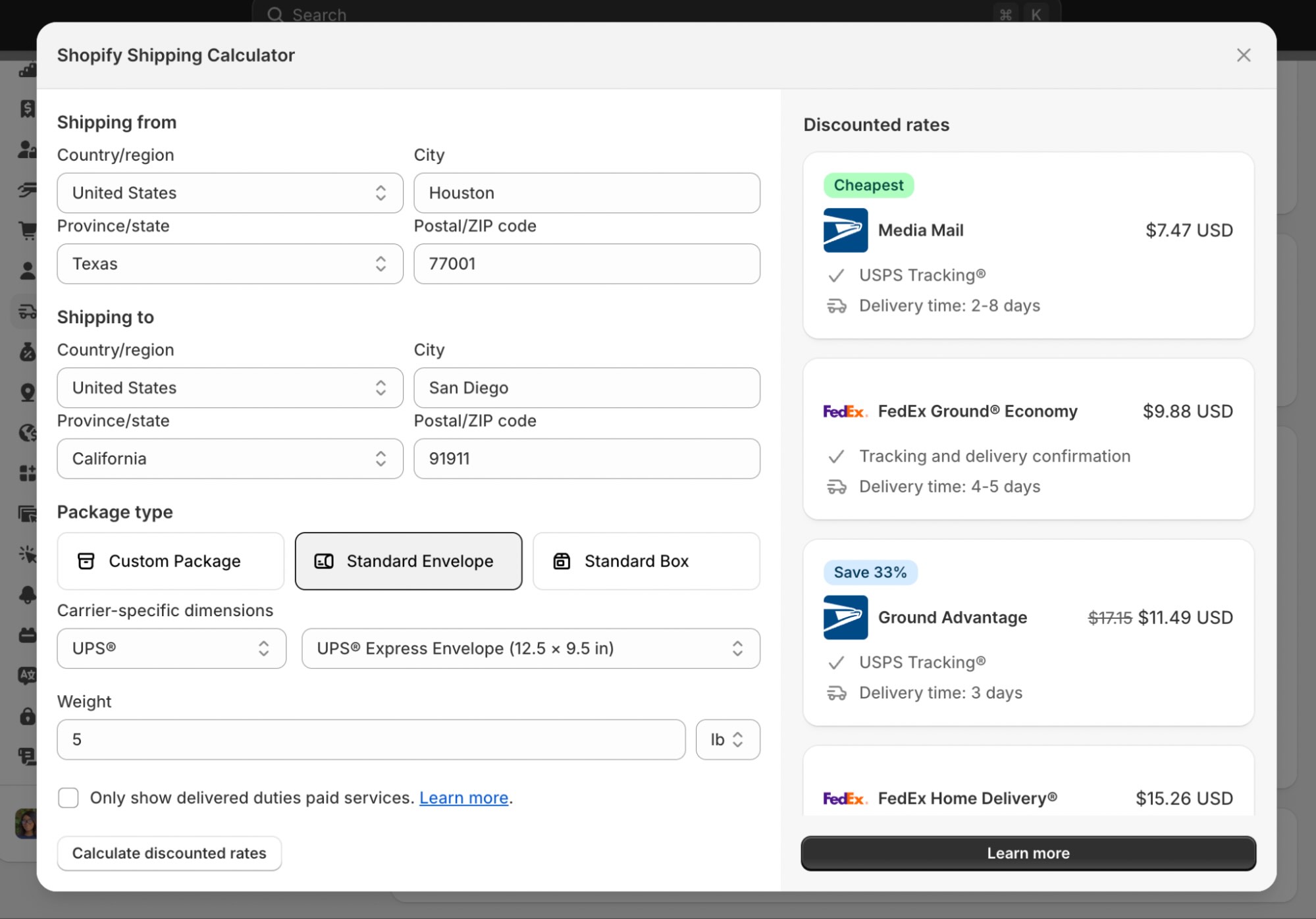
ClickFunnels is better suited for digital products, like courses, coaching programs, or eBooks. It even allows you to create, host, and sell a course natively so you can manage everything with just one platform.
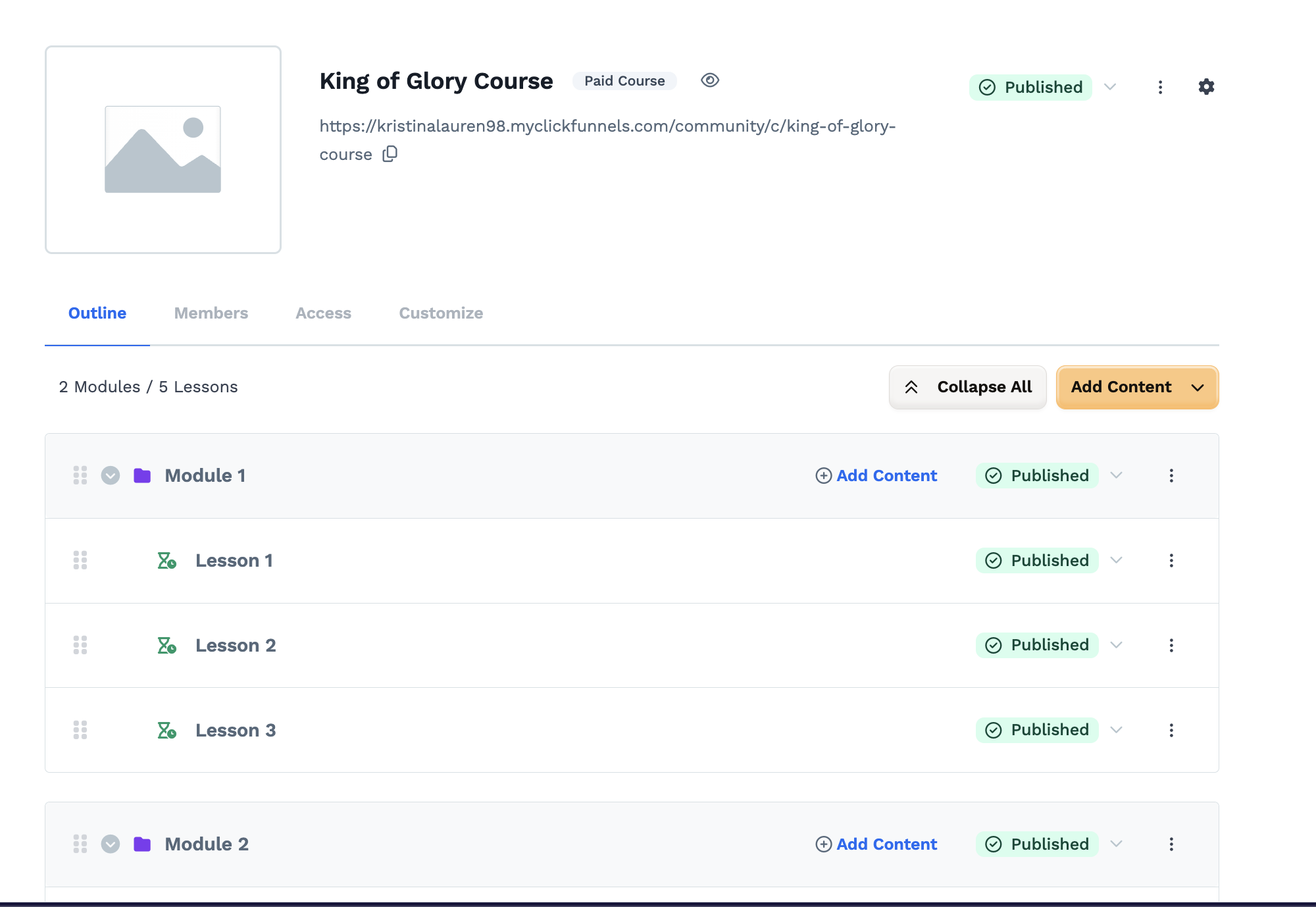
Shopify also supports dropshipping. It’s not built in natively—you’ll need to install third-party apps—but its dropshipping ecosystem is mature and diverse. It gives you access to a massive range of suppliers, automation tools, product customization options, and fulfillment services. You can also build branded product catalogs and connect multiple suppliers to your store easily.
ClickFunnels’ funnel-first structure, on the other hand, is designed for conversion so you can offer upsells, downsells, and urgency tactics that are ideal when there’s nothing to ship.
To be fair, ClickFunnels does allow you to sell physical products and integrates with some dropshipping platforms that can handle sourcing, fulfillment, and shipping. It also offers a feature called inventory history, which lets you track changes in product quantity over time. It’s a nice touch for sellers who want to create scarcity or limit availability. But it’s still somewhat basic with no variant-level tracking and no connection to a fulfillment or return process. Shopify’s inventory system, on the other hand, is built for scale. It tracks every stock movement, whether from orders, returns, staff changes, or warehouse transfers, and gives you control over all your SKUs and locations.
So if you’re selling physical products, Shopify gives you a much smoother and more complete experience. You can handle everything from order management to shipping and returns without cobbling together extra tools. ClickFunnels can sell physical items, but you’ll be responsible for piecing together the entire fulfillment flow or relying heavily on third-party plugins to do what Shopify already does out of the box.
ClickFunnels is better for direct response marketing; Shopify is better for SEO and organic traffic
This mainly comes down to the nature and purpose of each platform. ClickFunnels is well optimized to guide someone from a targeted ad or email directly into a high-converting funnel. It’s ideal for marketers who already have an audience or paid traffic strategy in place and just need a simple, focused landing page to convert leads into customers.
For example, if you’re running Instagram ads for a real estate course, your audience clicks the ad and is taken straight into a ClickFunnels page, usually an opt-in or sales page with no distractions or menus, but with a strong incentive to buy. Or, if you’re emailing your existing list about a new coaching offer, that link in your email would take them through a tightly crafted funnel with upsells, bonuses, and a checkout page, optimized for your audience to take action.
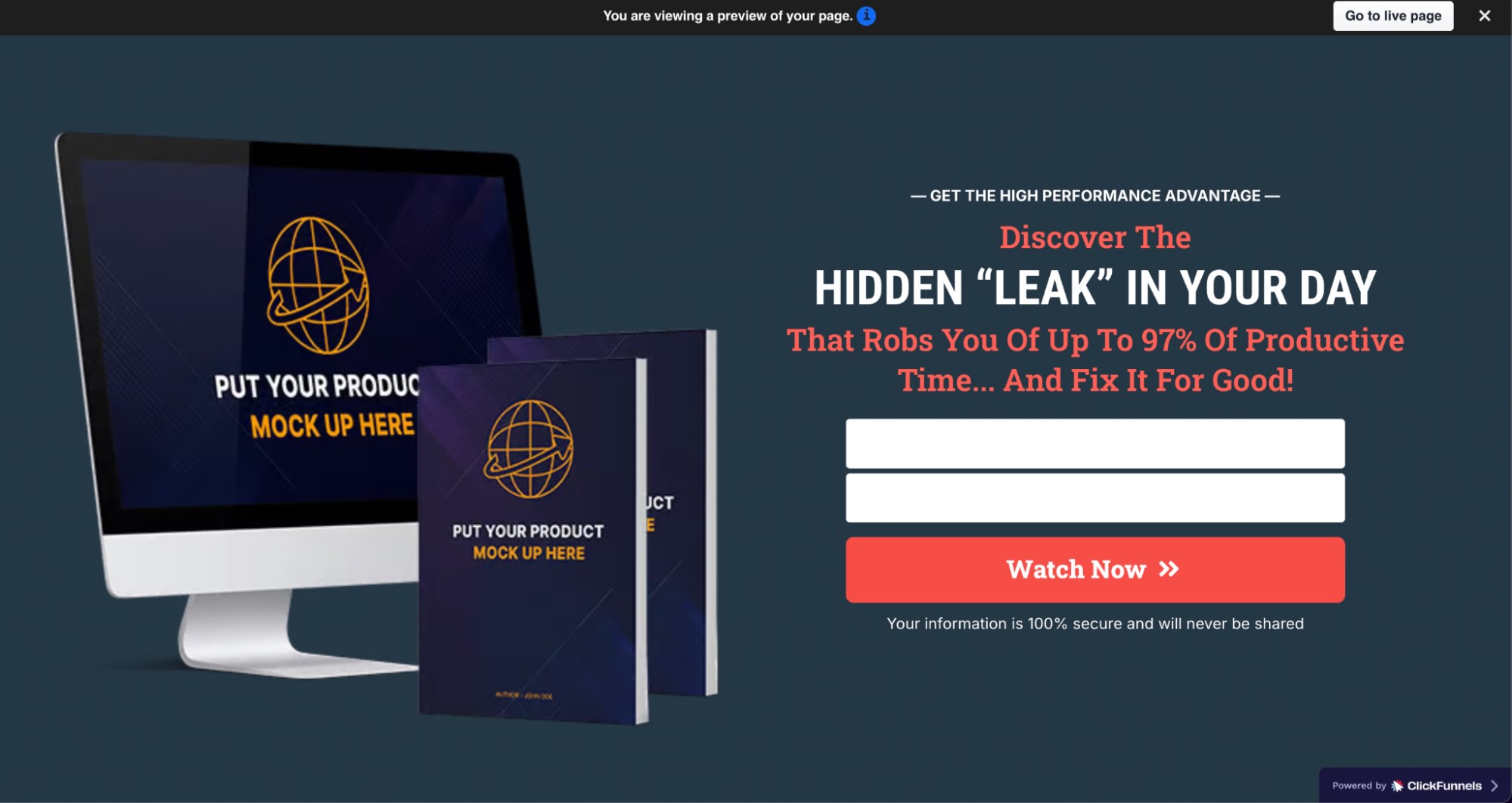
Shopify is better suited for organic discovery and search-based shopping. While Shopify users can still use paid ads and email marketing (and many do so as a main advertising method), Shopify’s strength lies in its SEO capabilities, which allow potential customers to find your store and products through search engines.
Shopify offers built-in SEO features like customizable meta titles and descriptions, alt text for images, automatic sitemap generation, and fast page load speeds, which all help your store rank better in Google.
Beyond the basics, Shopify also supports thousands of SEO apps and plugins through its app store, including tools for structured data, keyword tracking, and blog optimization. It also supports product schema markup, which helps search engines display rich product information (like reviews, price, and availability) right in search results.
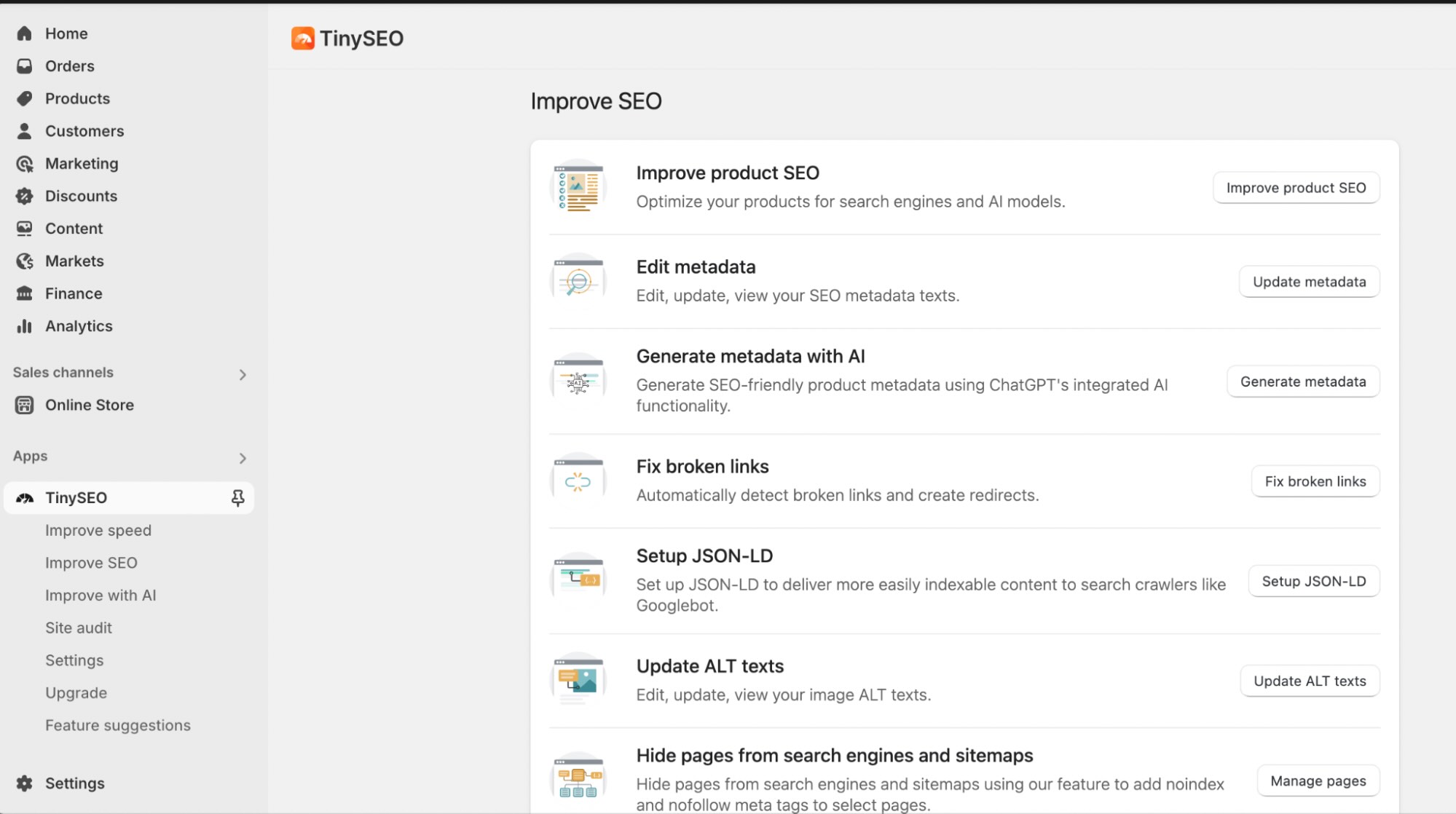
ClickFunnels’ SEO capabilities are more limited. You can set a page title, meta description, and custom URL, but that’s about it. There are no built-in tools for schema markup or advanced site structure management, but if you’re mostly creating funnels for direct traffic, this isn’t much of an issue.
Shopify focuses on store customization; ClickFunnels focuses on funnel optimization
Shopify’s App Store is stacked with thousands of integrations (many with extra subscription costs) that let you tweak almost every aspect of your store, including design, product pages, shipping, analytics, marketing, and customer support.
If you’re dropshipping, Shopify has you covered with apps like DSers for AliExpress, Printify, and Printful for print-on-demand products, Zendrop for faster fulfillment, and Spocket for US/EU suppliers. You can automate inventory syncing, order routing, pricing rules, shipping options, and even branded packaging.
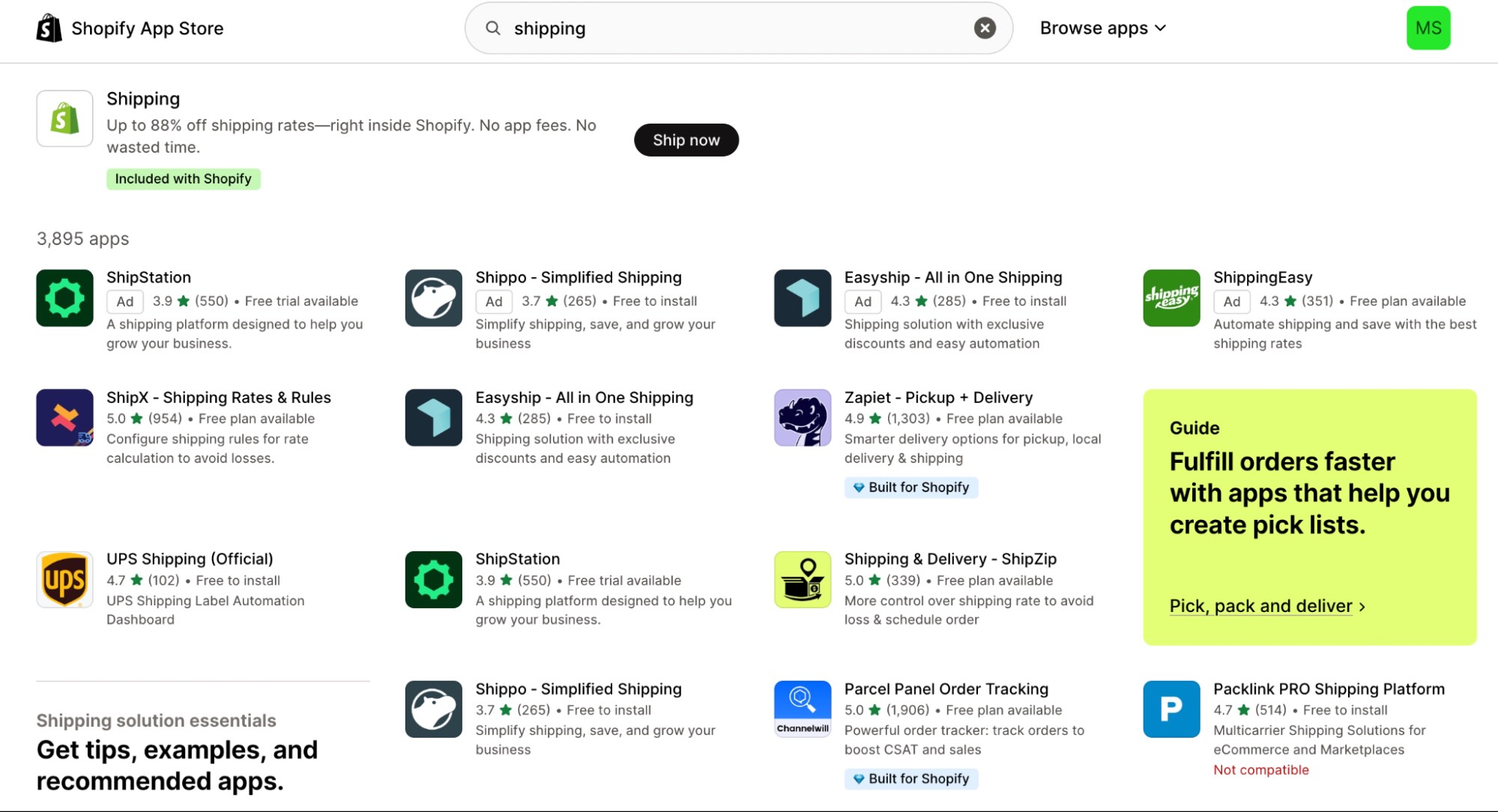
Adding these apps is as simple as finding them in the App Store and clicking install. You’ll also see some marked “Built for Shopify,” which means they’ve been vetted for ease of use, good ratings, and a minimum amount of installs. This doesn’t automatically mean they’re inherently more useful than an app that doesn’t have the label, but it’s just Shopify’s way of recommending them as high quality.
If you’re selling your own products, Shopify makes it easy to scale with tools for variant-specific photos, loyalty and subscription programs, multi-location inventory management, and automated shipping through its own Shipping app or services like ShipStation, ParcelPanel, or Shopify Fulfillment Network.
You can also choose from nearly 900 themes covering almost every industry. While most are paid ($100–$500), the free options are clean, modern, and highly customizable. More technical users can go deeper with HTML, CSS, JavaScript, and Shopify’s templating language, Liquid, to do things like show low-stock messages dynamically, personalize greetings for returning customers, or swap product images based on selected variants.
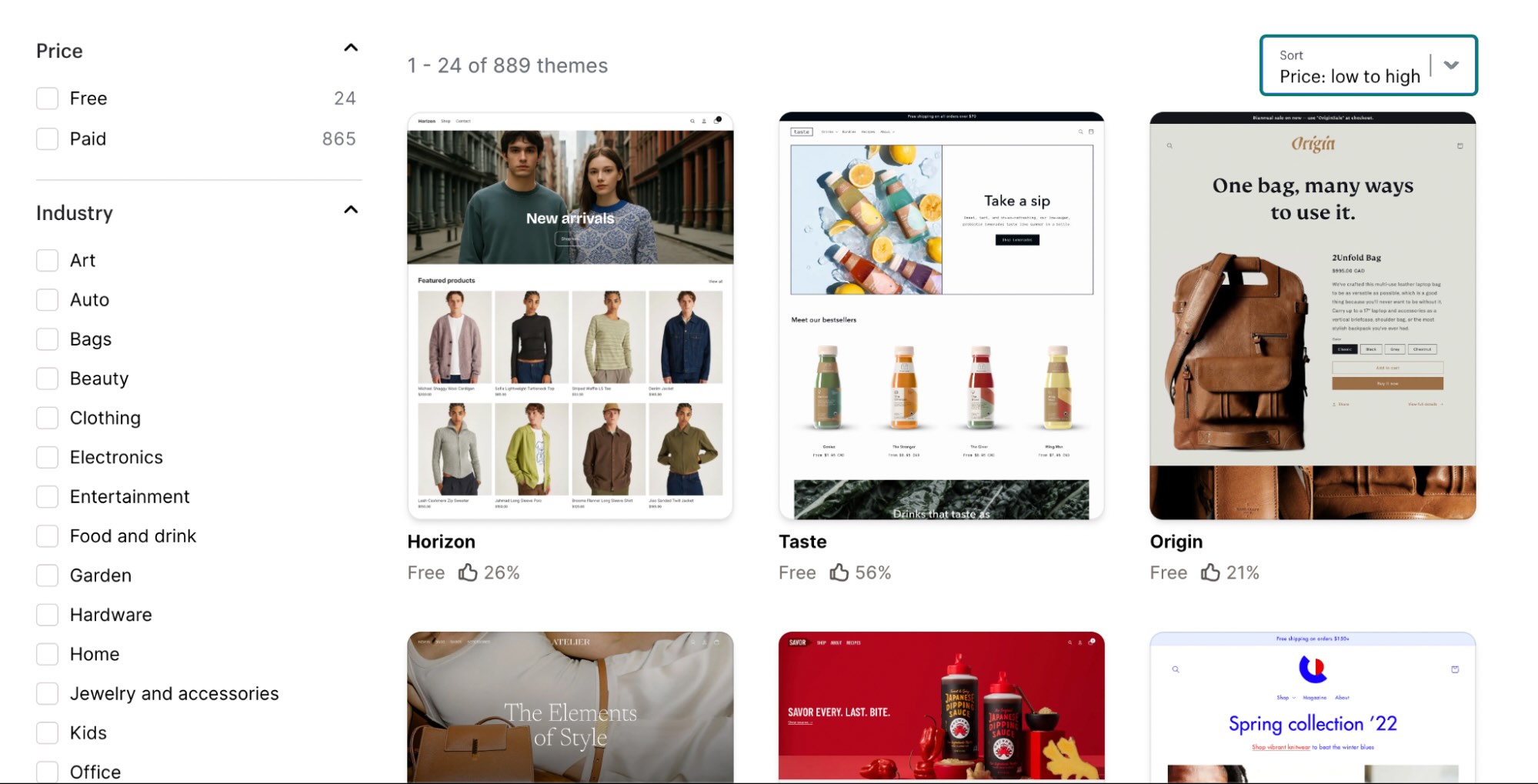
ClickFunnels takes a different approach, being built to feel like a sales funnel from the jump. It’s perfect for getting a funnel live fast with minimal design work. You can start with one of 14 funnel types for lead generation, webinars, event signups, product upsells, and more, then pick a pre-designed template.
Customization is drag-and-drop, so you can quickly edit text, swap images, change colors, and drop in ready-made sections like testimonials, countdown timers, or pricing tables. If you want to skip that, a generative AI feature called Smart Funnels will create a funnel for you based on a short prompt and produce a design theme, sales copy, and all the pages you need.
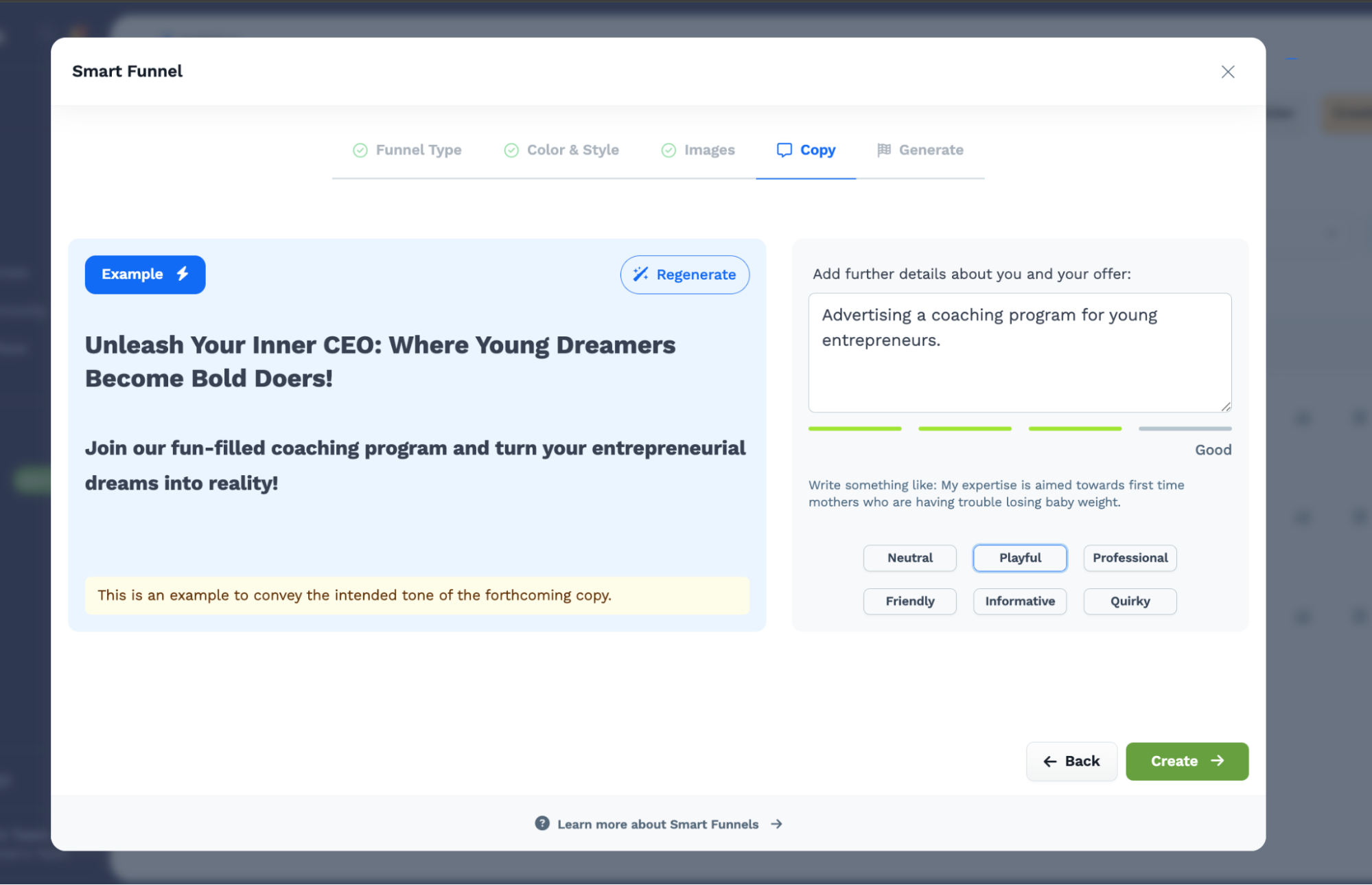
There’s also Napoleon, ClickFunnels’ built-in AI chatbot. You can ask it, for example, to generate some new copy for you with a witty tone, and it does a pretty decent job. I also asked it to write up a full paragraph advertising a real estate course, and it quickly generated copy that was gimmicky but usable with editing. If you ask it to generate an image, things get kind of glitchy, but overall, if you need some fast copy, I think it’s a useful AI tool.
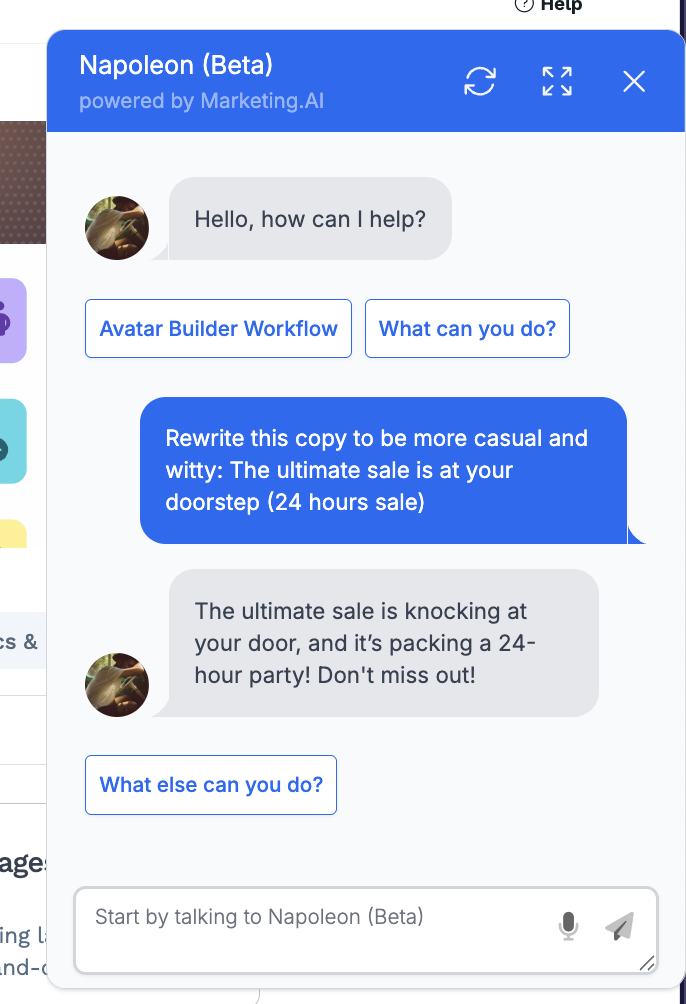
ClickFunnels has its own app hub with native tools and external apps for sales, marketing, scheduling, analytics, and much more. It’s not a full-on app store like Shopify’s, but it gives you the essentials. You can add apps like Survey Workflows, a built-in app to create custom surveys and insert them into the pages of your funnel.
This could be useful if you want to, for example, get some feedback after a purchase. You’d just add the survey to the last page of the funnel (the order confirmation and thank you). This is also where you’d add the native Analytics app to keep track of your performance metrics.
And although ClickFunnels isn’t loaded with thousands of third-party apps and plug-ins, under the aptly named Integrations page, you can still find some very useful native integrations with popular platforms like ActiveCampaign, Calendly, Mailchimp, and Airtable.
Shopify has built-in payments; ClickFunnels relies on third-party processors
While both ClickFunnels and Shopify can process payments without much of a hassle, they go about it in very different ways.
ClickFunnels doesn’t have its own built-in payment system. Instead, it relies on third-party processors like Stripe, PayPal, and Authorize.net. That’s not necessarily a bad thing since these are well-known, trusted services, but it does mean you have to connect and manage those integrations yourself.
It also only allows one payment gateway per funnel, so if you want to offer both Stripe and PayPal, for example, you’d need to duplicate your funnel or use Payments.AI as a workaround. Payments.AI is part of ClickFunnels’ app stack, and it lets you route payments through various gateways to handle different payment situations.
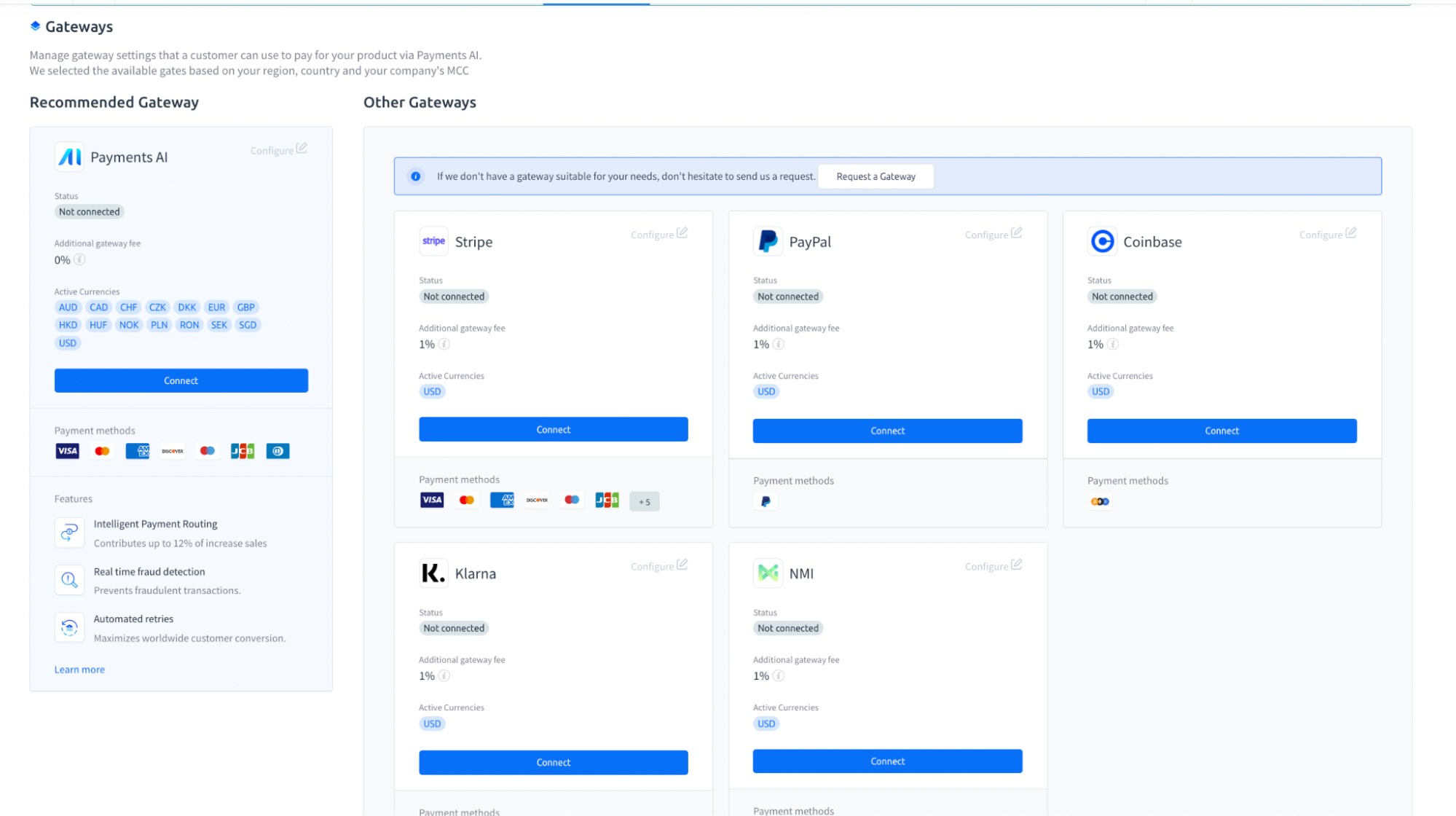
Shopify makes things simpler with Shopify Payments, its own built-in payment processor. It’s actually powered by Stripe behind the scenes, but the big difference is that Shopify handles everything for you, from checkout to payouts, all inside your Shopify dashboard.
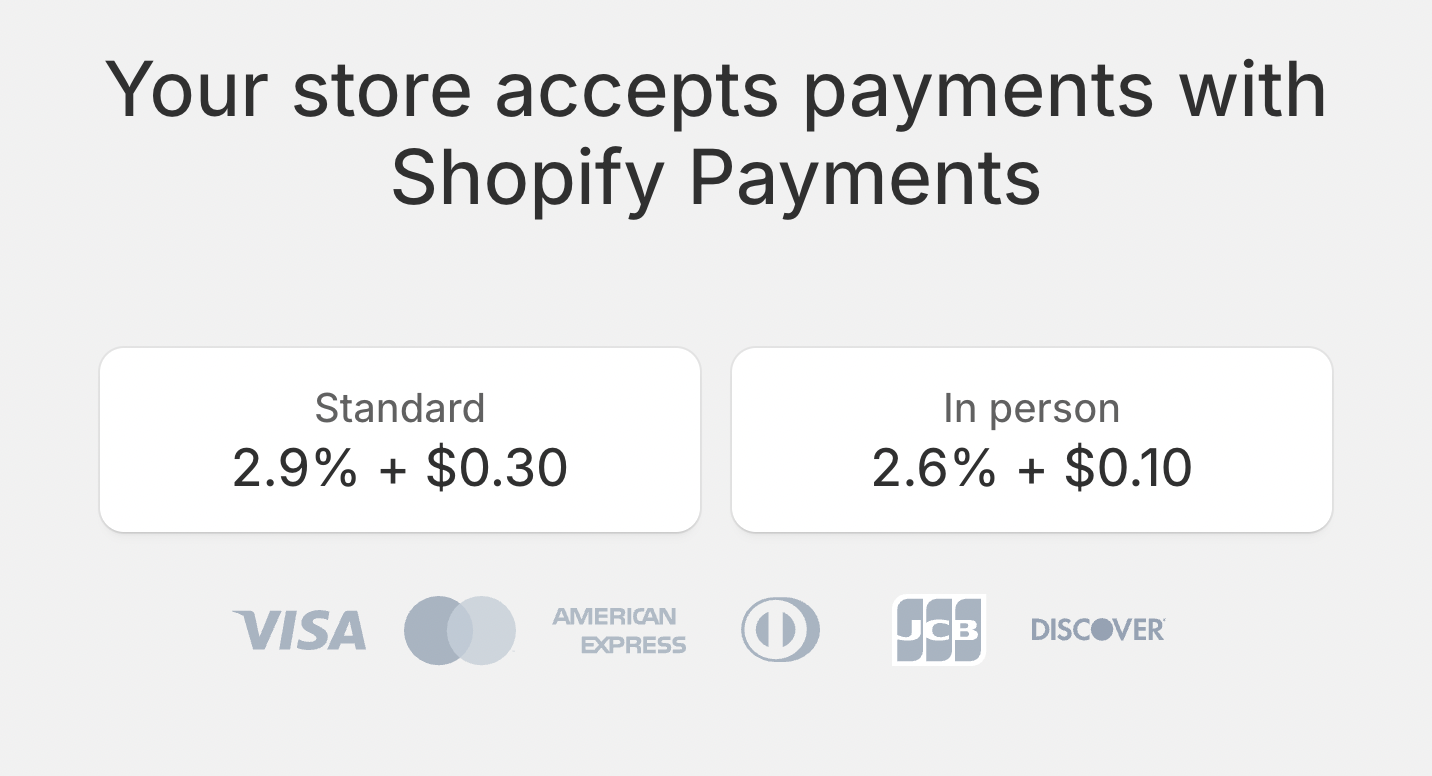
Since it’s built in, you don’t need to mess around with third-party integrations to start accepting credit cards, Apple Pay, Google Pay, or other major payment methods. You just turn it on, and you’re good to go.
Another key benefit here is that if you use Shopify Payments as your main processor, you typically avoid extra transaction fees that Shopify charges when using outside payment providers.
Just be aware that Shopify Payments is only available in certain countries (primarily in North America, Europe, Australia, and New Zealand). If your country isn’t on the list, Shopify gives you access to over 100 third-party payment providers, like PayPal, Square, or even region-specific gateways if that’s what you prefer.
Shopify gives deeper native insights; ClickFunnels needs external tools
You’re going to get useful data from both Shopify and ClickFunnels no matter what, but the depth and focus of that data are very different.
Shopify offers a robust, built-in analytics dashboard that gives you so much insight into every corner of your business that it might be a little overwhelming (or very much welcome!). You can track sales over time, customer behavior, average order value, conversion rates, sessions by location or device, and even sales by social media referrer, all without needing to hook up a third-party tool.
It also gets quite granular with time periods, allowing you to look at your data by time periods like Black Friday / Cyber Monday sessions.
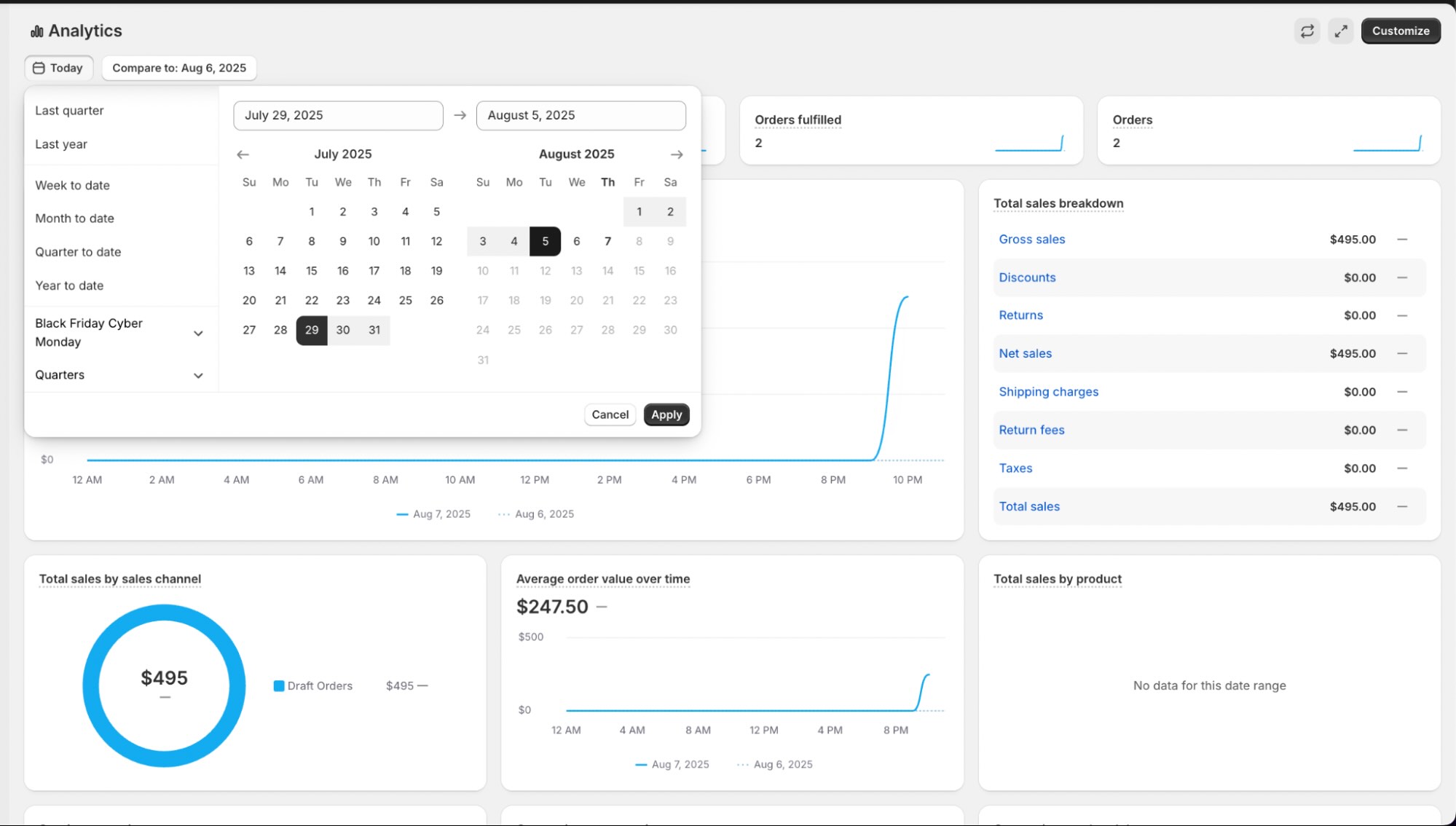
It also includes real-time visitor tracking with its Live View, so you can see where your traffic is coming from around the world and what’s happening on your site at any given moment. Beyond the dashboard, Shopify gives you access to over 150 detailed reports, including sales by product or channel, customer retention analysis, bounce rates, and search behavior.
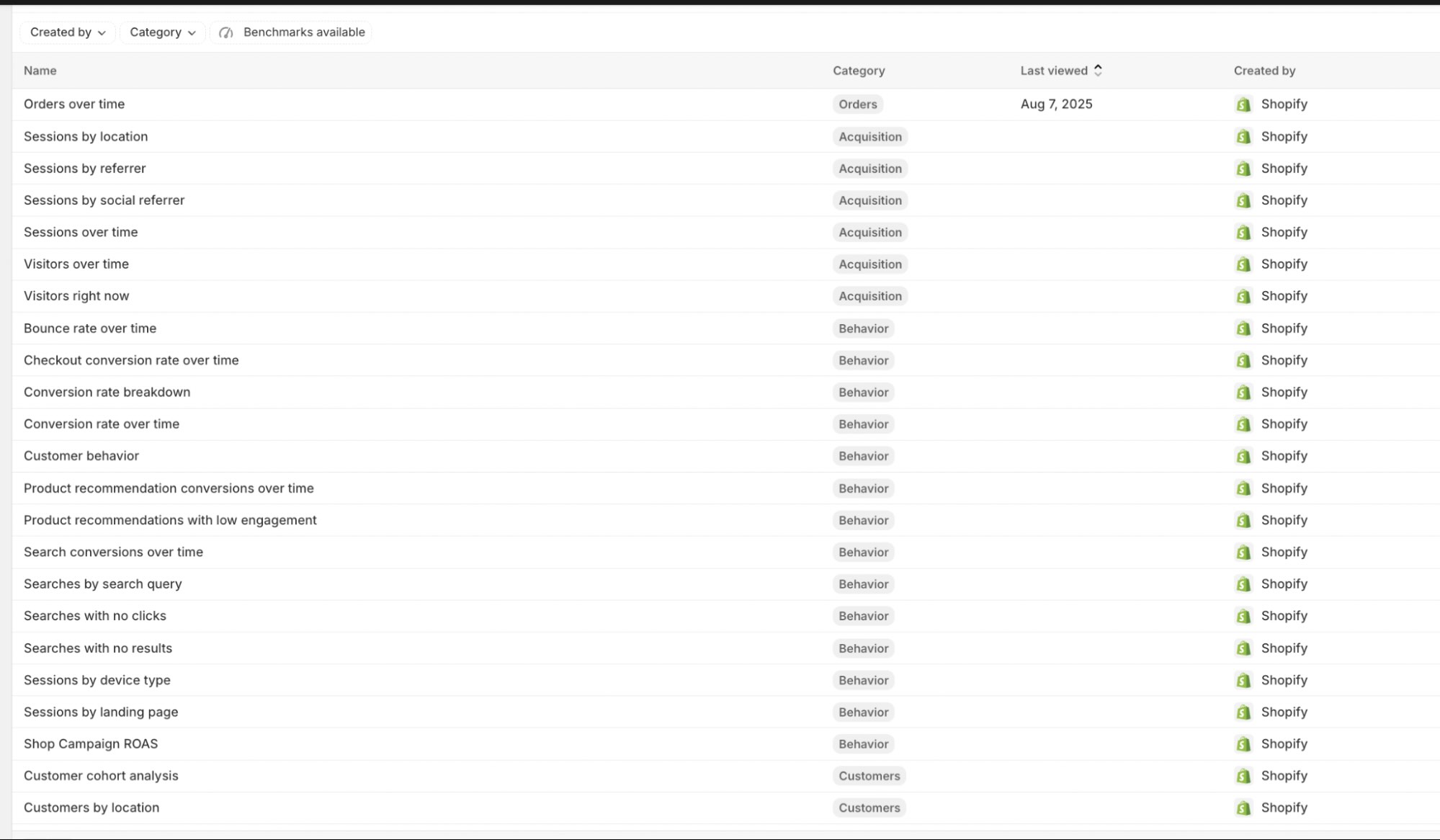
If you’re on the Plus plan, you can create custom reports using Shopify’s own query language (ShopifyQL), which lets you dive deeper into your store’s data for specific trends and performance insights. For example, you could build a custom report that tracks your average order value over time for customers who came from Instagram, or create a report showing how many units of each product variant were sold by location during a specific promotional period.
ClickFunnels is built around funnel performance. You have your main Funnel Analytics Dashboard, which gives you an overview of exactly how users move through your funnel, including pageviews, upfront sales, recurring sales, and average cart value. But you can also break down earnings per click, subscription revenue, and individual funnel step conversion rates, all within a clean, step-by-step visual builder.
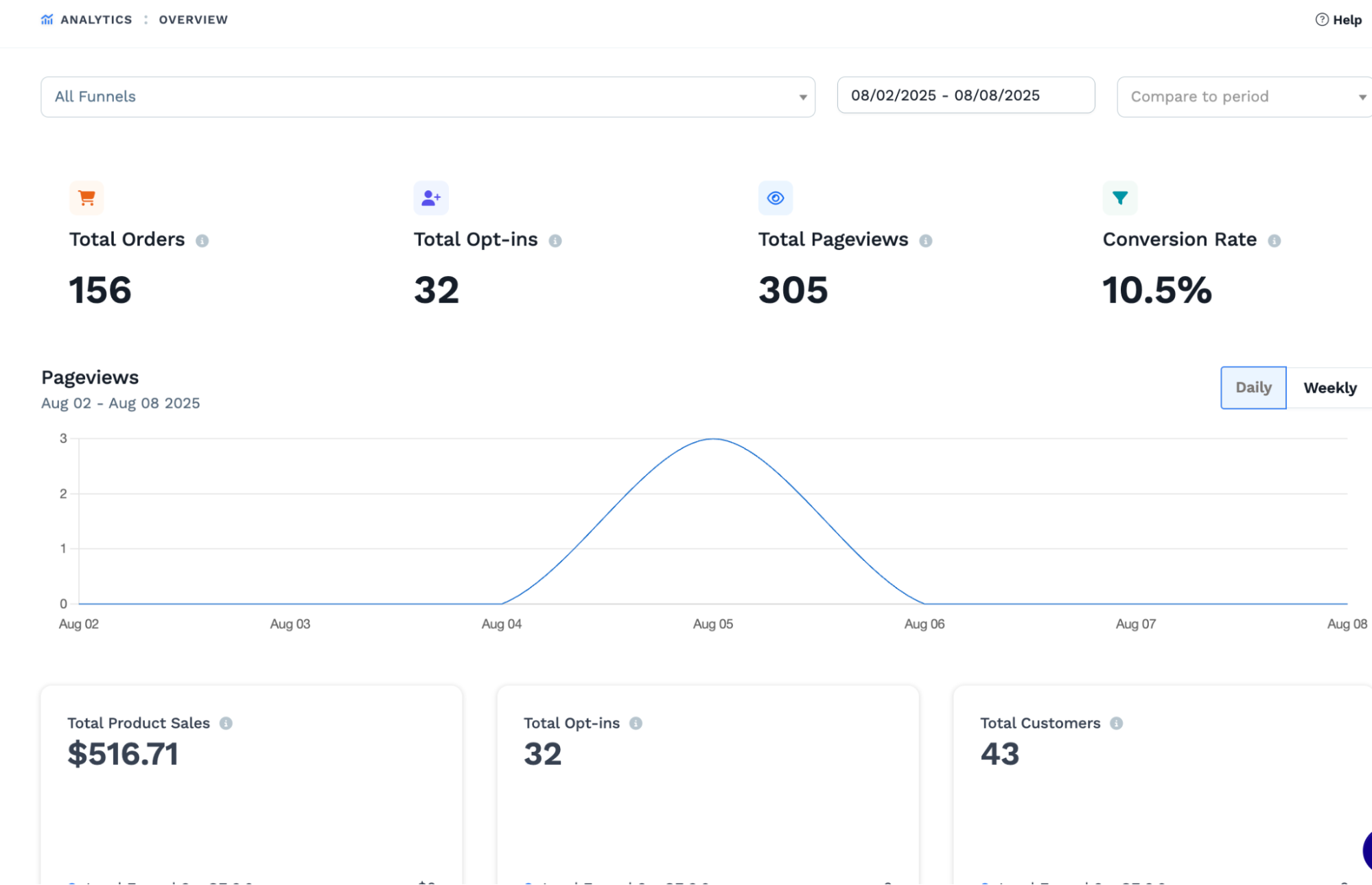
Aside from the main dashboard, ClickFunnels also lets you view metrics directly in the funnel workflow, so while you’re editing or reviewing a funnel, you can see side panel stats, individual step performance, and data like order volume and opt-in rates. You can filter by time range, use UTM tracking to evaluate campaigns, and even drill into specific order data for deeper insights.
That said, if you want to track things like customer lifetime value, retention rates, product-level performance, or inventory-related insights, you’ll need to connect to tools like Google Analytics, Facebook Pixel, or Zapier-connected CRMs.
Both apps integrate with Zapier, connecting them to thousands of other tools
Whether you choose Shopify or ClickFunnels, both platforms offer deep integrations with Zapier, an AI-powered automation and orchestration platform that connects over 8,000 apps. That means you’re not limited to the native integrations each platform offers. Instead, you can create automated workflows that move data across your tech stack, trigger actions based on customer behavior, and keep all your tools in sync—no manual work or code required.
Zapier acts as an AI and automation layer across your business operations, helping you intelligently route information, apply conditional logic, and even summarize or extract insights from data on the fly. For example, when a customer makes a purchase through Shopify or opts into a funnel in ClickFunnels, Zapier can automatically send their details to your CRM, create a task in your project management tool, and draft a personalized follow-up email—all orchestrated seamlessly in the background.
By leveraging Zapier’s AI capabilities, you can scale faster, reduce human error, and deliver a more connected experience across every customer touchpoint. Learn more about how to automate Shopify and how to automate ClickFunnels, or get started with one of these pre-made workflows.
Zapier is the most connected AI orchestration platform—integrating with thousands of apps from partners like Google, Salesforce, and Microsoft. Use interfaces, data tables, and logic to build secure, automated, AI-powered systems for your business-critical workflows across your organization’s technology stack. Learn more.
Shopify vs. ClickFunnels: Which should you choose?
Here’s my take:
-
Choose Shopify if you want a full-featured online store that can handle everything from product listings to fulfillment and long-term customer management.
-
Choose ClickFunnels if your main goal is to lead people through a high-converting sales funnel with minimal distractions.
Some folks actually use both. If you go that route, you can connect them using Zapier and do things like automatically create contacts in ClickFunnels when you have new customers in Shopify, create new Shopify orders when ClickFunnels records new orders, or create new Shopify customers based on updated ClickFunnels invoices. Here are a few templates to get you started.
Related reading: